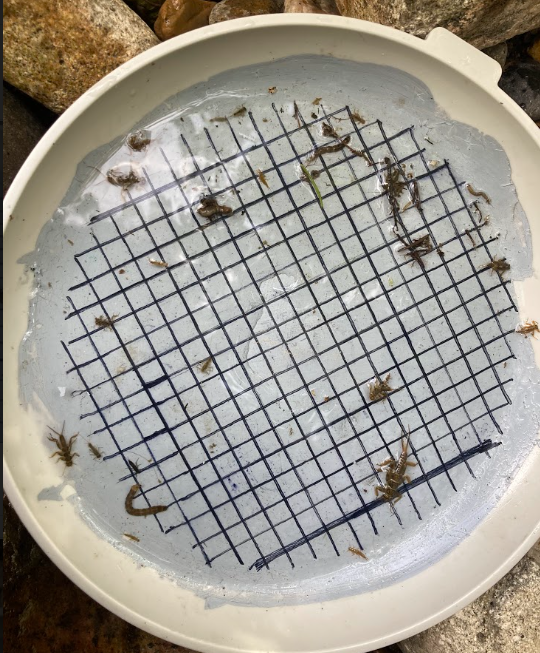Macroinvertebrate Monitoring on the Upper Yellowstone and Upper Madison Watersheds
To help us better understand stream health in the Greater Yellowstone Ecosystem, we are now monitoring benthic macroinvertebrate populations on both the Yellowstone and Madison watersheds. Benthic macroinvertebrates are small animals and insect larva that are large enough to be observed with the naked eye and live in aquatic environments for all or part of their lives. These organisms typically live in stream bottoms attached to rocks, woody debris, aquatic vegetation, or burrowed in sediments. Common macroinvertebrates observed in streams in the GYE include stonefly larva, mayflies larva, caddis fly nymphs, riffle beetles, and aquatic worms.
Why Monitor Macroinvertebrates ?
It is important to monitor macroinvertebrate populations in aquatic ecosystems as these organizations are reliable biological indicators of water quality! Researchers use macroinvertebrates as biological indicators because they react to human disturbances in predictable ways, are easy to collect, spend significant portions of their lives in water, and have limited mobility. A key factor here is that difference species have varying tolerances to pollution. This means that scientists can gain insights into the level of pollution in a water body based on whether pollution tolerant or intolerant species are found living in it. Additionally, since these organisms are fairly immobile, they cannot swim away from a pollution source in a water body as larger organisms such as fish can. This means that macroinvertebrates provide good indicators on water quality local to the observation area.
Macroinvertebrate sample collected on the East Fork of Mill Creek.
Identifying macroinvertebrates along the Yellowstone River Main Stem!
Where and What are we monitoring?
For our macroinvertebrate monitoring, we are recording which species are observed at each site and the relative number of each species present. To do this, we use a method known as kick sampling during which our techs “kick” the stream bottom to dislodge organisms living there and use fine mesh net to catch any macroinvertebrates that were disturbed. Once we have collected the organisms in the net, we can then place them on an observation tray to determine which species were living at that location. We are using this method to monitor macroinvertebrates at all our sensor station locations on key tributaries to both the Yellowstone and Madison Rivers. Additionally, we are sampling at select fishing access locations along the mainstems of both of these rivers.


